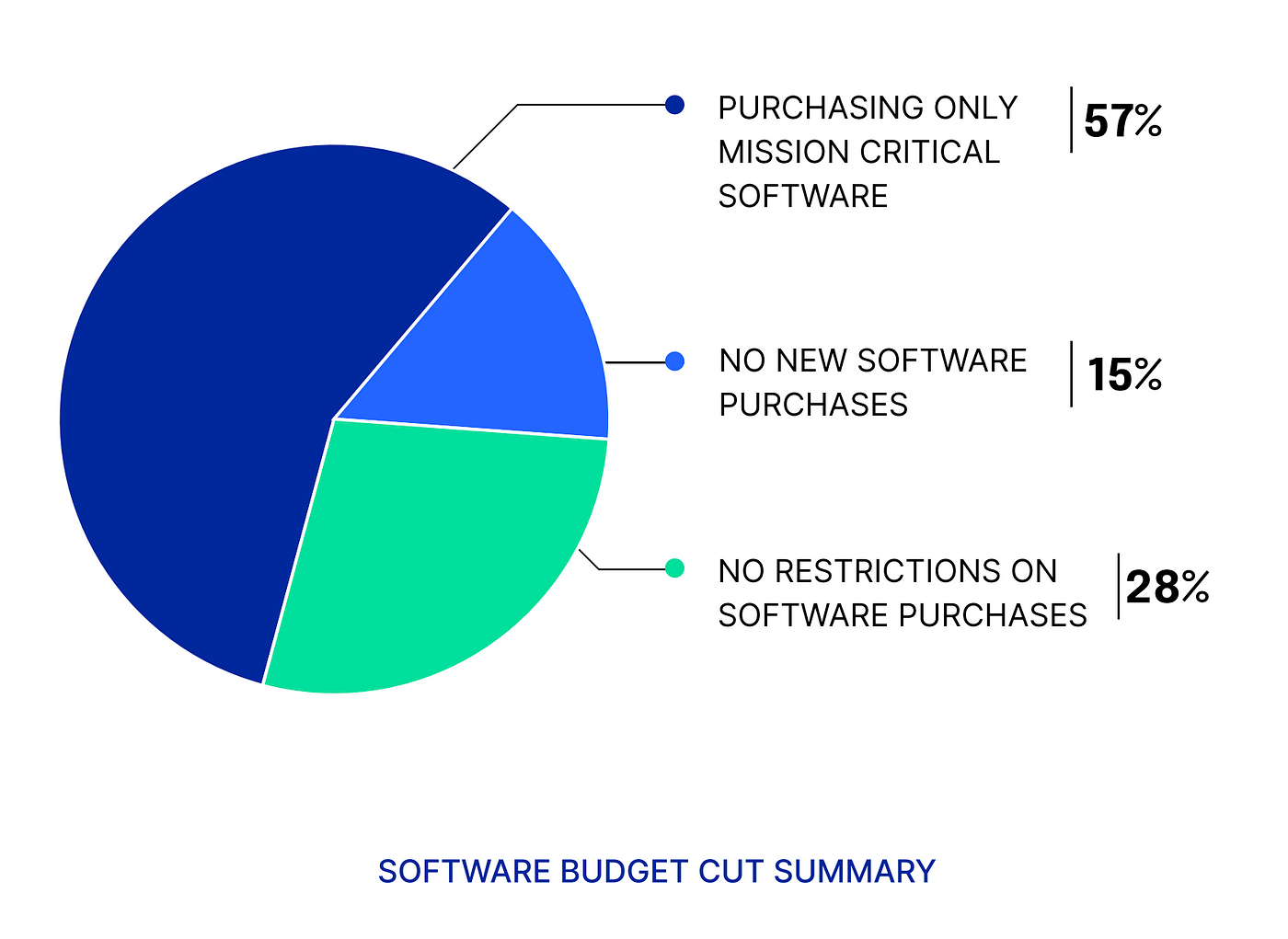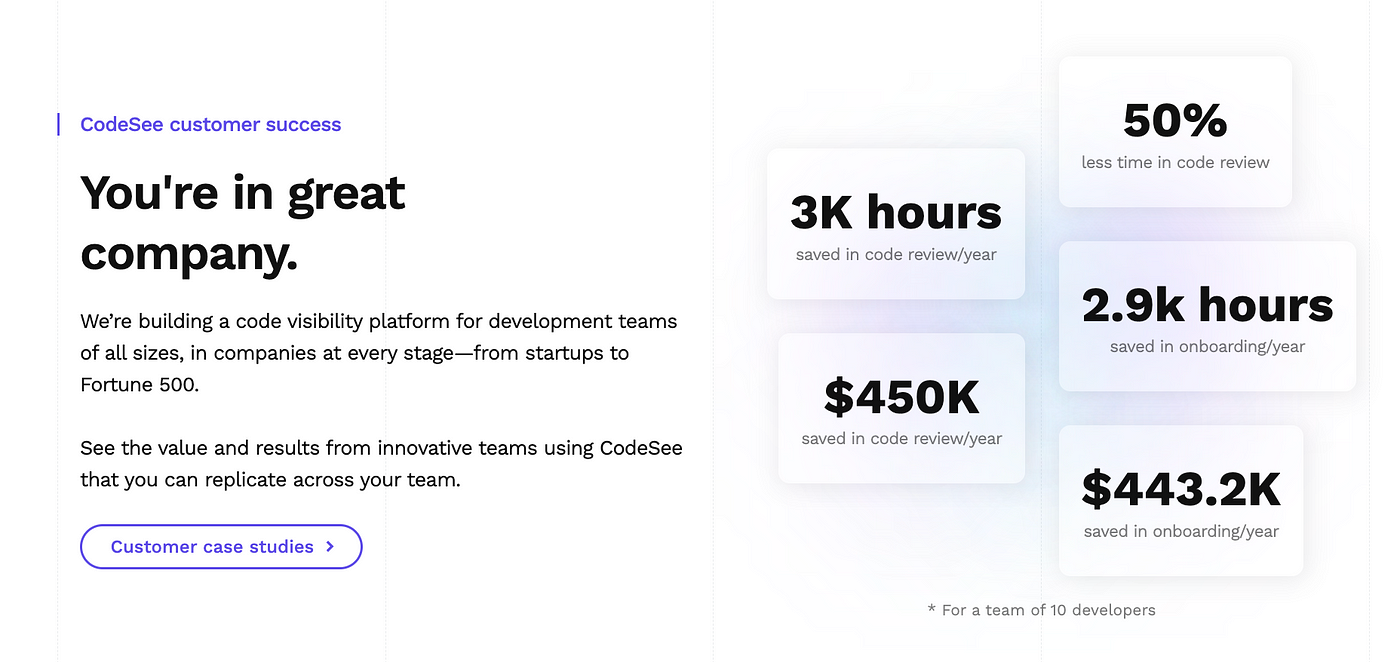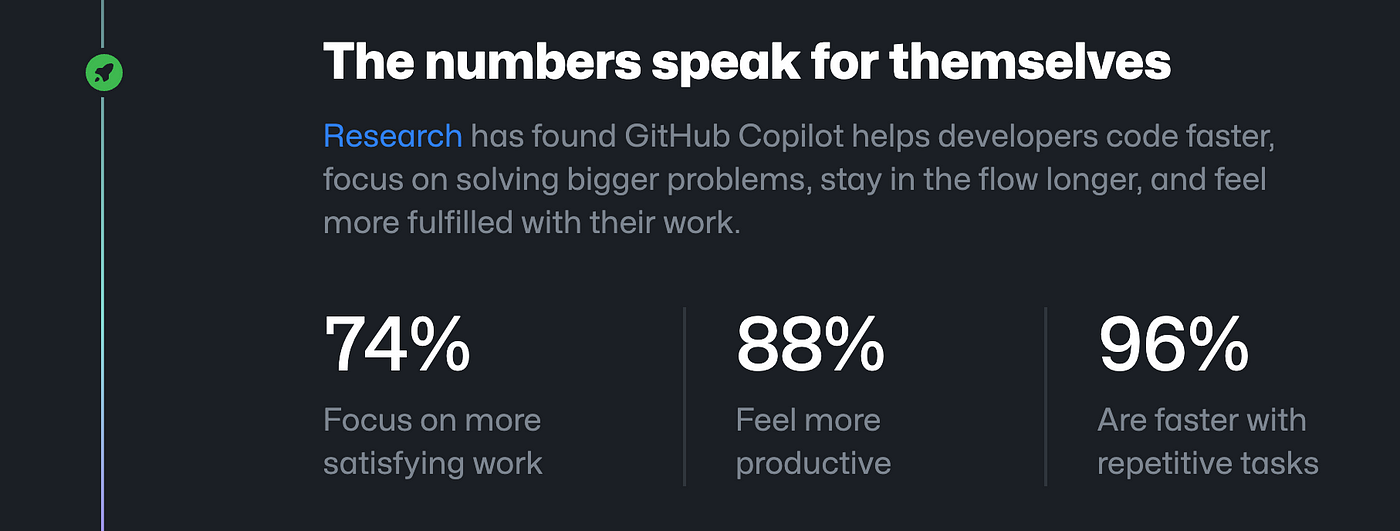How to sell dev tools in 2023

This article was originally published on Medium.
If you’re experiencing more friction in the sales process this year, you’re not alone.
In their 2023 Report Impact of an Economic Downturn on the SaaS Industry, Everstage and RevOps Co-op reported that of the 64% of companies experiencing cuts, 67% were cutting software budgets. Almost three quarters have either decided not to purchase new software at all, or only purchase mission-critical software.

This makes landing a deal with a new company extremely challenging. The bar for buying is now higher, with procurement being a lot more critical in what they approve, and taking longer to close deals. Renewals are at risk too, with businesses looking to make cuts wherever possible.
 The purchasing power shift
The purchasing power shift
In a recent episode of 20VC with Guy Podjarny (co-founder of Snyk), host, Harry Stebbings, commented “I think what we’re seeing now with the downturn in the macro is a reversion back to purchasing power with the CFO away from individual contributors”. This was Guy’s response:
It’s really tough, I do think this is a tough moment for PLG. I still think that it’s a temporary reality… Modern organisations rely on an empowered workforce that can make decisions and move quickly. At the moment, everyone’s looking for places to cut costs, and empowerment is not the word of the day, and things get centralised.
This shift in purchasing power has a direct impact on the behaviour of dev tool buyers, who are being pressed to make decisions based on a few key questions:
- Will this help reduce the costs of running my business, and by how much?
- If not, will this enable me to run a more efficient business with lower headcount?
- If neither of these, will it help my business meet its key goals?
OnlyCFO has a longer list of these questions that the product champion needs to be able to answer.
Further on in the interview, Guy goes on to stress the importance of communicating value now more than ever.
If you’re a startup, you have to acknowledge that… you can shift your messaging to focus on, for instance, productivity or cost savings that this product can provide… You have to help your users communicate with your buyers. You have to help them understand “what is the use case?”, “what is the value proposition?” …
People confuse [use case] with ROI. They say “features”, they talk about the technology, they talk about finance. All those are not important, what’s important is the value to the customer. All these things are just the symptoms of it. You really have to understand what is the value, and my favourite statement to customers is to say “look, if we align on the value that we provide you, we should be able to align on the price”.
If you figure that out as a company, what is the value you provide, now it’s just how you get that message across.
So let’s explore how to get that message across by:
- Quantifying your product’s value
- Understanding how to effectively message your product’s value
- Going further by ingraining your value points directly into your product
 How to quantify your product’s value
How to quantify your product’s value
Last year, Snyk ran a customer value study to understand their customers’ perception of value. Snyk’s user is different to its buyer, and while its users can directly see for themselves the value of using the tool, the buyer (in this case the CISO and CTO), needs more convincing. Snyk identified the top CISO and CTO considerations when buying security tooling as risk reduction, coverage, speed, ease of use, developer efficiency, and reliability.
They then turned these considerations into numbers, quantifying exactly how much money, time, and headcount they believe they can save customers based on their size based on industry data. This report was then shared on their marketing channels, as it’s a great way of selling the value of the product to potential customers. The data is also used in conversations with prospects, and in product decks.

Getting the data
Snyk was able to survey 350 of its customers to produce this report, but fledgeling startups won’t have the luxury of this many data points. However, it’s still possible to get meaningful data on a product’s real value. In the early days of Snyk, we did this by interviewing individual companies as part of a case study and gathering industry benchmark data.
Reach out to your most engaged customers and ask them for a case study. Ask them how much time your product has saved them with various tasks, or for stats on how it improved their reliability. They might even be able to quantify that reliability figure into a dollar value, particularly if they’re a well-trafficked storefront. This is how the code visualisation startup, CodeSee, has collated their data:

They do a really nice job of showing value on their marketing site by showing time as well as budget savings. Their tool is very likely to be a new line item in most companies, so while they might not be able to help reduce the software budget, they can help reduce costs elsewhere in the business.
Courier does similar, and focuses on both the internal and external value they provide — from reducing time to production, engineering hours and operational overhead (internal value), to increasing notification engagement (external value).

Know your buyer persona
As well as having a deep knowledge of your user persona, you should also be considering that of your buyer. While a passionate user can help sell within a company, you can’t always rely on there being a good relationship between the user and the buyer — don’t expect your champion to do all the legwork of translating your product’s value into terms that your buyer can relate to.
A buyer might be the CTO, the VP of Engineering, or even the CFO. They are going to have different motivations to your users, so the value you show them should be different to the value you show your users. For example, your users may be sold on feature-level value or simply liking using a tool, but your buyers care about cost to value — is the value that the team will get worth the cost of buying the tool, and how can that be quantified?
Talk their language — if you can tell buyers exactly how much money or time you’re going to save them, or how you’ll meet their key goals, you’re going to have a much easier time in the procurement process — especially where your buyer won’t be the one using the tool and may not have as much context about it.
So when talking to potential buyers, learn what their top considerations are, and make sure you sell on those points. Quantify those costs and put them front and centre on your marketing site and pricing page. Ideally, give users a way of validating this in the product, such as on dashboards or service emails that calculate how much has been saved based on usage.
Be honest
Nobody likes being oversold on value. When you make a statement about how much money or time you can save a customer, you’ve got to be prepared to back this up. Ideally, give users a way to track it for themselves in the product! With Snyk’s example, the next obvious step here would be to quantify this on the user’s reporting dashboard so they can see for themselves exactly how much they’re saving over time. Users could customise this with their own data on things like wages to get a more accurate result. Until you have this, a simple spreadsheet may be enough to help the buyer see how you calculated this value, and change the parameters to map the true value more closely to their business.
 Examples of demonstrating value
Examples of demonstrating value
Replacing or removing budget line items
It might have been more acceptable before to offer your software as a complement to other tools, but businesses will now be looking to economise by replacing or removing line items from their budget by switching to cheaper tools or, if they’re not delivering the value they promised, to stop using them altogether.
See this as an opportunity to displace incumbents. If you’re able to offer features that are comparable to the competition at a lower cost, sell the value of being able to replace the more expensive tool. If you’re more expensive, see if you’re able to remove the need for the business to use multiple tools that do similar things.


Saving developers time
Developer time = money. The more time you save engineers, the more time they can spend building stuff. Being able to quantify exactly how much time your product will save customers helps make it a no-brainer.

However, Kyle Poyar of OpenView warns against using time savings as a value proposition.
Nearly every software product promises to save folks time. Isn’t that the goal of software after all? Go deeper to pinpoint what’s different about your approach and how that helps the user & the business.
In his post, he stresses the importance of focussing on the outcome of that saved time.
Connect into the broader benefits around what folks can *accomplish* with that extra time — are you able to execute more projects with the same staff? Or ship products faster, giving you a competitive edge?
This is an important point, as by talking about what the team can accomplish with that saved time, you can connect more closely to the business’s priorities.
Supplementing specialists
A lot of skills that used to be specialisms are now combined into a Full-stack Developer’s role (Front-end, Back-end, QA, DevOps, DevSec). In Stack Overflow’s 2023 Software and Development Trends for Engineering Leaders report, they claim that only half of all development teams have the training and skills to run their own infrastructure. Skills in areas like Security and Platform Engineering and Infrastructure are scarce, so software that enables any developer to cover more of this area without extensive training is particularly attractive. Businesses are looking for opportunities to apply automation that will make their specialist hires more productive.

Is it possible to write a post in 2023 without mentioning AI? Nope. While AI features may be able to completely displace salaried employees, having that as your marketing tagline is not a great look. Your products should be empowering, not exclusionary. Talk about the things those experts will be able to focus on instead, now that they have an AI to do the grunt-work.

Reducing infrastructure costs
Many companies will be trying to reduce their expenditure on infrastructure this year. If your product helps reduce infrastructure bills, lean into this. Give as clear an indication as possible of exactly how much money you could save customers based on their cloud provider and the number of API calls they make.

If your product improves reliability, consider the cost savings of reducing a business’s downtime. There are studies you can refer to here — Uptime Institute’s 2022 report states that over 60% of failures result in at least $100k in total losses. If a company is aiming for 5 nines uptime (being fully operational 99.999% of the time), that only allows for 6 minutes of downtime a year. 4 nines uptime equates to 52 minutes and 36 seconds of total downtime a year.
This value will have the most weight in industries where uptime is directly tied to profit. If an e-commerce site goes down, they will lose money for every moment of downtime. Ask your buyer how many minutes of downtime was related to the specific area your product is trying to solve and the impact that had on their bottom line (you’ll need to exclude the downtime that you have no control over such as power failures).
 Ingraining your value points into the product
Ingraining your value points into the product
It would be a waste to keep these value points exclusively for sales and marketing, as they are so useful as a tool for encouraging adoption. Put them to work for existing customers to encourage further rollout by showing projections of potential savings if more team members are added or more services integrated.
Make your product stickier by reminding them of the value you have delivered them. This is gold for renewal conversations (assuming usage is positive!). If your user attempts to downgrade or offboard, this is another good time to show them those metrics and remind them of the value they’d be losing.
Citymapper does this pretty well by showing the value of using it after each trip in terms of calories burned, and carbon and money saved compared to the equivalent trip in a car. They have a running total within the app so you can see how much using it has saved you.

Another place that’s great to regularly call out these value metrics is in your product usage report email. Here’s something I wrote earlier on just that topic!
Finally, keep that feedback loop going by validating these time or cost savings with your customers, and consider features that will further increase or better demonstrate them to help support your customers through this challenging economic climate.
 Potted summary
Potted summary
That was a lot to digest, so here’s a summary:
- As well as understanding your user persona, learn about your buyer persona and the values they care about. Make sure your messaging speaks to them.
- Examples of developer tool value points include saving time, replacing or removing budget line item, reducing infrastructure costs, and supplementing specialists (hello, AI!).
- Gather your value metrics via a survey, or if you don’t have enough users yet, get individual data points from customer case studies.
- Take care not to over-exaggerate your value — be prepared to show your workings to prospective buyers.
- Go further by ingraining your value points directly into your product via dashboards or a product usage report email.
